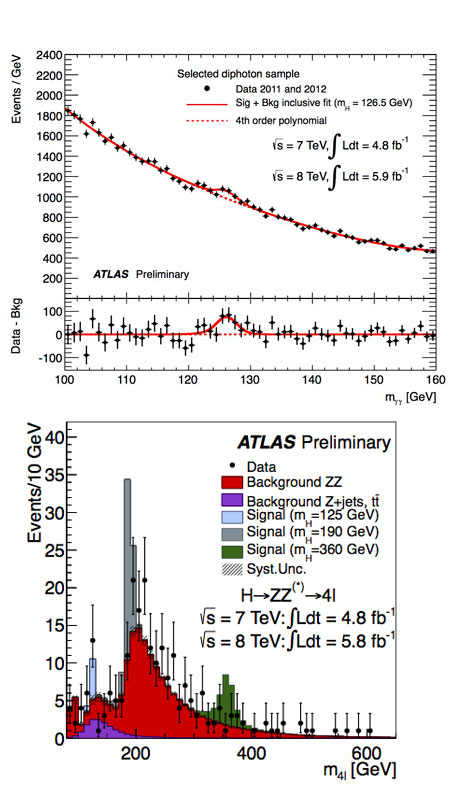Searching for the Higgs at CERN
Associate Research Fellow Dr. Song- Ming Wang, who leads the Taiwan team in Higgs search at the ATLAS Experiment of the Large Hadron Collider (LHC) at CERN, has obtained first results. CERN announced on July 4, 2012 that a new particle, consistent with the Higgs of the Standard Model (SM), had been observed by both ATLAS and CMS Experiments. The current Higgs search is focused on five categories according to the final states of Higgs decay. These are: 1. two photons; 2. two pairs of leptons; 3. two leptons each with its associated neutrinos; 4. a pair of tau; 5. a pair of b-quark together with a Z or a W produced with the Higgs and decaying leptonically. ATLAS observed signals in the first three categories with a combined significance of over 5σ. The 4th and the 5th categories have complicated background s and usually possess unobserved neutrinos in the final state so that their analyses are still on-going in ATLAS. Positive results from these searches are needed to confirm that the observed new particle is indeed the SM Higgs. Taiwan team led by Song-Ming Wang directly participated in the last three categories of Higgs search and is a major team in the 5th category search. Since a pair of b-quark is the dominant decay mode of Higgs in the expected mass range, results from the 5th category search eventually will provide critical information about the new particle. In addition, the first two categories of Higgs search in ATLAS rely on several results on electron and photon detection obtained by the Taiwan team. The Academia Sinica Grid Center (ASGC), located in the basement of the Institute, is the only Tier-1 grid center in Asia. It processed more than 10% of data for ATLAS and CMS scientists around the world to conduct the Higgs search as well as other searches for new physics. This is the first time that large scale distributed computing is used to support real-time processing of an extremely large amount of data from a scientific project. The phenomenal success in computing is widely recognized to be one key factor in allowing ATLAS and CMS to obtain the first positive Higgs search results in such a short time.

Journal Links: http://www.phys.sinica.edu.tw/index_detail.php?id=research&newsid=308&eng=T